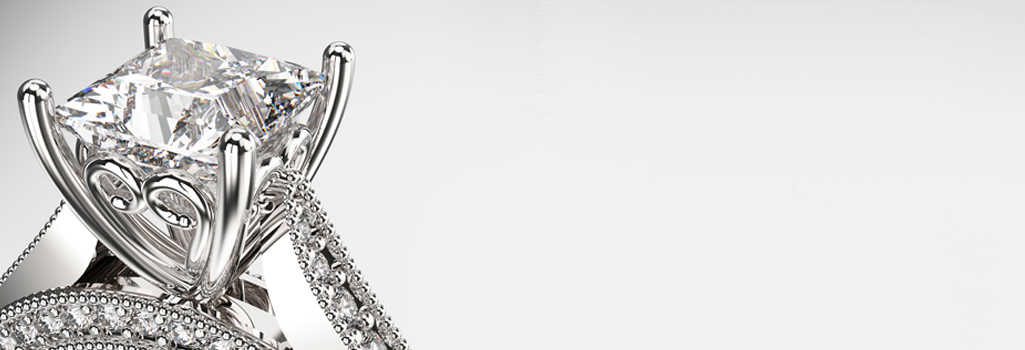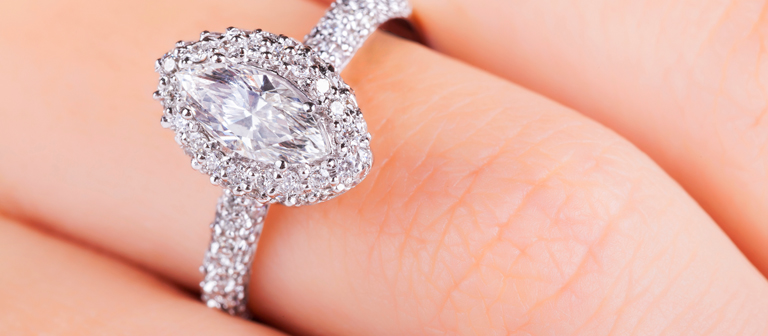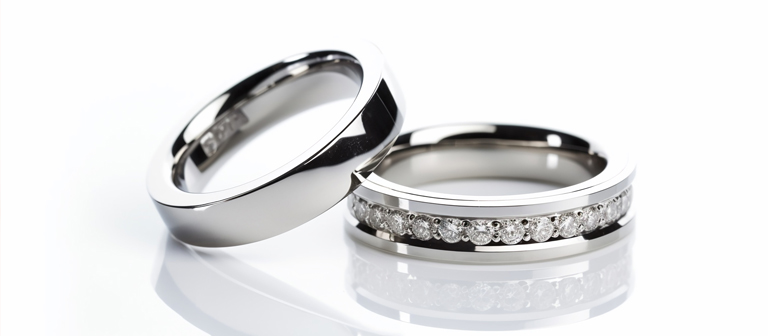
Things To Know When Considering A Platinum Engagement Ring
What is platinum?
Platinum is a very rare metal that is much harder to come across than gold or silver. Because it is less abundant it is a well sought after choice when it comes to engagement rings. How rare is platinum compared to gold? It is about 30 times rarer than gold, which adds to the allure for those looking to make an impression. The name platinum comes from the word “platina”, which is a Spanish word meaning “little silver”. This light grey-white silvery color metal perfectly complements the brilliant shine of traditional white diamonds in the engagement ring setting. The rarity of this metal makes it very valuable and more costly than silver or gold in both procuring it and in creating an engagement ring.
How is platinum made?
Platinum is not actually a metal that is “made” at all. It is not a blend of alloys because its natural density is enough to be incorporated into an engagement ring entirely on its own. Platinum is an element with the atomic number 78 and is mined from the earth’s crust. While our modern use of platinum began in about the 1700’s, Egyptian tombs have been found to have platinum dating back to around 1200 B.C. Additionally, platinum is 95% pure and considered one of the purest metals which makes it a popular choice for engagement rings.
What color is platinum?
Platinum can be described as a silvery-white metal or a pale metallic grayish-white color and is a top choice for engagement rings because of how it accentuates the shine of a diamond.

Pros and Cons to Choosing Platinum for Your Engagement Ring
Pros
- A Low Maintenance Silvery Glow – While white gold has a similar appearance to the highly desired platinum, white gold requires regular plating with rhodium to maintain its silvery white sheen. Engagement rings can see a lot of wear and without this ongoing maintenance, white gold can start to show yellow undertones. While regular inspections of your engagement ring are always recommended, platinum does not require any maintenance or plating to keep its silvery-white metal hue and may add to the allure of this metal choice for an engagement ring.
- Striking Visual Appeal – Platinum has a unique glow that is hard to match when it comes to showing off the traditional white diamonds of an engagement ring. Over time this glow can develop a rich patina which brings a vintage charm to jewelry while still accentuating the focal point of your engagement ring. However, due to its versatility, if the vintage look is not your look of choice platinum can be restored to its original shine with just a quick and easy buffing!
- Durability for Your Engagement Ring – Over time, gold engagement rings can become thin as the result of continual wear and years of repolishing. Without regular maintenance, the prongs of wedding rings made of gold or white gold can become weak and brittle. Unfortunately, this lack of proper care can lead to lost stones. One advantage of platinum jewelry is that it does not become thin, due to its durability. If damage does occur to a platinum ring, the metal is simply displaced and does not flake off. You don’t lose small amounts of platinum with wear, which means it can be polished or repaired to be just like new. This metal holds up to use even when worn regularly!
- A Hypo-allergenic Metal – As mentioned, platinum is one of the purest metals you can find. It is between 90-95% pure and is a must have for engagement rings destined for brides that are allergic to alloys. Gold, due to its soft nature, must be mixed with other metals to make it hard enough for use in jewelry. Platinum does not require any mixing and is naturally strong enough for use in creating beautiful engagement rings. When it comes to white gold, anyone allergic to nickel could have a reaction to it and for this reason, platinum is a safer choice.
- An Engagement Ring with Weight – Relative to its competitors, platinum is a much heavier metal. When it comes to feeling more solid and sturdy, wearers of platinum jewelry say it feels much more secure when they wear it.

Cons
- Higher Cost Engagement Ring – By far most people would agree that the biggest con to platinum is its cost. Since it is so rare it goes without saying that the cost reflects its scarcity.
- Can Show Signs of Visual Wear – While the color of platinum does not require maintenance and any scratches that occur do not cause any loss of this precious metal, the metal itself IS more prone to scratches or dents themselves. Regular buffing may be necessary depending on your lifestyle.
- Increased Malleability – Because platinum is more malleable and is not mixed with any alloys it is more easily bent. If you smash your ring or catch it on the corner of a door handle, fridge, or lifting weights, it is possible that you will need to take it in for some repair.
- More Difficult Engagement Ring Repairs – Platinum, while beautiful, is harder to work with and some jewelers may have to charge higher labor costs when it comes to making, re-sizing, or repairing your jewelry.
There are so many decisions that come into play when choosing the metal for your engagement ring and we hope that this information has helped you feel more informed when it comes to making that big choice of an engagement ring. However, when it comes making the final choice, nothing beats seeing your different choices side by side in person. If you are looking to narrow down your options and get one step closer to making that ultimate purchase of an engagement ring, then stop by our Gilbert jewelry showroom. We are happy to help you make the best decision when it comes to this meaningful purchase.

